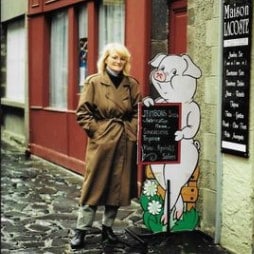
Home » The Bubble: Now Is the Time to Reverse the Trend

There have been several very good articles written for SHOWSIGHT in the past few months, but the one that I want to follow up on was in the February 2025 issue. Eduardo Fugiwara asked, “Where are people going to get their purebred dogs from in the future?” and this covers all dogs; show dogs, working dogs, hunting dogs, herding dogs—you can name them all.
People in the show community have been aware that something needs to be done to stop the freefall of the purpose-bred, purebred dog population, but how do we reverse this trend?
One of the problems that we have been facing within our own community is that there have been two opposing factions. One feared popularity, which can result in get-rich-quick puppy producers jumping on the bandwagon, to the detriment of our breeds and the dog world in general when dogs end up in shelters. This can result in extremism, accusing anyone who breeds more than occasionally of doing it for the money. This led to other breeders becoming too cautious and limiting their programs.
On the other hand, we have breeders who have been dedicated to preserving their breeds, which meant not only breeding litters but encouraging new people to own, show, and work with those breeds. People who are among the preservation breeder movement believe that we do need to breed from our dogs to preserve the existence of these breeds for the future. But according to the “opposition,” you should only breed for a replacement show dog and require spay/neuter contracts on all puppies sold. Up until now, the first group has been the loudest and the most vocal, with the most influence. But this cannot continue.
In many breeds, annual registration numbers indicate that recovery could be slow and difficult unless serious efforts are made to reverse the trend. I think about what happened in the UK after World War II, when thousands of dogs were euthanized at the beginning of the war. Food rationing was required for people, with nothing left for dogs. Those few who were able to keep dogs and their breeds alive were not in the cities. They were in the country on farms and in the rural areas. I was told that one war-time breeder in the UK was only able to keep her dogs because she also had a public house, a pub. I am sure she was on good terms with the local poacher, too!
After the carnage of the war, breeders had to work with what was left, and not all of it was good. They had to use what they could find or what they had, and breed carefully and selectively, which did not mean restrictively. Those who had acquired their foundation stock from those who came before them continued creating lines of their own. That would be more difficult today because too many show-quality puppies will have been spayed or neutered and taken out of the gene pool. More efforts need to be made to preserve high-quality bloodlines before it is too late.
AKC has created the Purebred Preservation Bank for semen that can be used long after the dogs themselves have passed on. There has been some discussion about it in the past couple of years, with some people having grave reservations as to whether to participate, their reason being they can’t stand the idea that somebody they might not like may want to use the semen after they are dead. That is not a preservation breeder! The true preservation breeder would be happy to see their dogs’ genetic heritage, and that of their forebears, continued on for posterity.
If the thought of breeding a litter and having puppies you cannot sell scares you, DO NOT breed! Instead, make friends with breeders who do enjoy having puppies and talking to people. Refer any people you meet to call them. The good old “word of mouth” system still works well when used.
I do not use online or paper applications to screen puppy buyers. I need to talk to them. Yes, on the phone. I do it for two reasons. Firstly, people can write what they think I want to see. I cannot be sure that what somebody puts on a piece of paper is in fact true. They can sit around the kitchen table working out whose names they can use for a reference.
Secondly, to get any level of detail about a person requires a questionnaire that borders on the offensive when e-mailed to a total stranger who has not even been given the courtesy of a simple phone call to say hello.
Now we have the benefit of social media, but a big problem we have today is that too many people no longer want to talk on the telephone. I think that when somebody is interested in a puppy, you need to talk to them. Ask them why they want this particular breed. What is their reason? Discuss it with the new owner—not just tell them what they can or cannot do. Suggest another breed if you think it would be better for them! I have done this, happily. I remember one man who had always had a dog of the same breed and thought it was time for a change. I asked him what he liked about that breed and compared it with an Afghan Hound. We had a long chat, and then he said that he realized he wanted another one of the same breed as before! If a breeder had sold him a puppy based on a perfect online questionnaire, it would have been a mistake.
I am now thinking back more than 20 years; there was a member of the Yahoo group who had owned Afghan Hounds for many years but had never shown or bred a dog. She told us that her greatest fear, seeing the declining registration numbers, was that the day would come when she would not be able to find a puppy to buy to replace the one which would be her last. The breed has declined further since then, and for the last five years there have been 300 or fewer puppies registered each year. If purebred dogs are to remain available to people in the future, now is the time to reverse the trend.
